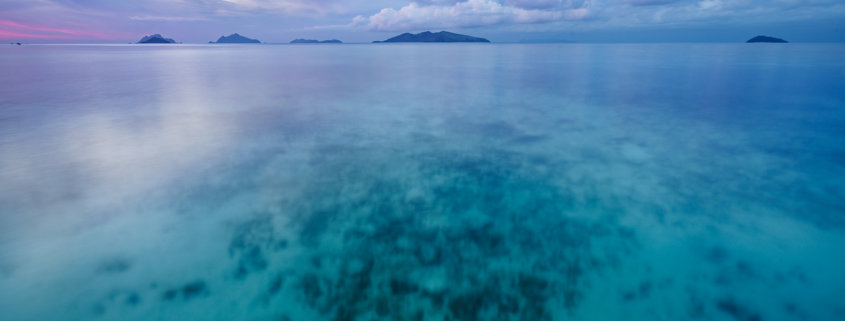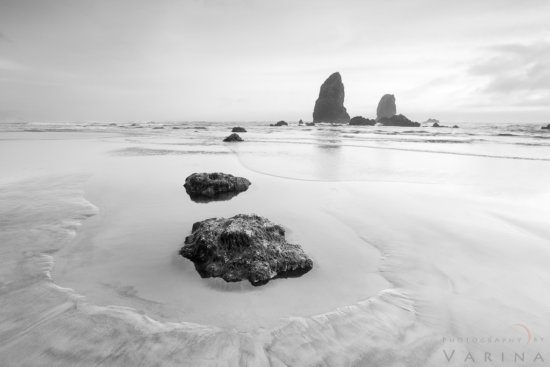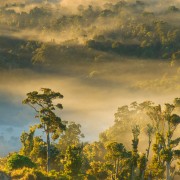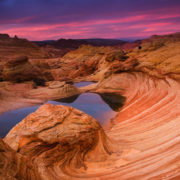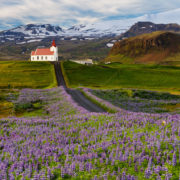Mastering Low Contrast Light in Nature Photography
When you think of great light for nature photography, you probably picture a brilliant sunrise or the rich golden-hour glow. On the other hand when heavy clouds move in, you probably aren’t excitedly grabbing your camera and tripod, and heading for the nearest natural icon… but maybe you should! Heavily overcast skies produce soft, filtered lighting… which can result in reduced contrast through the camera lens. Low contrast natuer photos are characterized by soft textures, and subtle shadows and highlights. It can be difficult to capture stunning photos with impact when the light is less interesting… but it’s an excellent way to challenge your creativity!
Here are some nature photography tips to help you capature fantastic photos during those overcast days
Create Minimalist Nature Photography Compositions
When we visited White Sands National Monument in New Mexico, the skies were heavy with thick clouds. Skies like these filter and scatter the light so that shadows are all but eliminated. Minimalist nature photography compositions work especially well in conditions like these, so I pushed my tripod feet into the sand, and positioned the camera to remove all distractions from the frame. The smooth curve of the dune, understated colors, and the repeating patterns in the sand combine to create a spartan photography composition. Subtle nature photography and subtle light go hand in hand.
I actually enjoyed the challenge of working with the soft light in such an interesting location. Rather than following the light and building a photography composition around the best part of the sky, I found myself free to let my foreground elements take center stage. I found so many interesting details in the sand – like the circular patterns in the sand that had been sketched by the grasses as they blew in the wind.
Use Fog to add Mood
Fog creates low-contrast conditions, too – and it’s fascinating to work with. Overcast or foggy days call for a different mindset. We aren’t shooting spectacular sunbeams, crazy colors, or incredible cloud formations. Instead, we pay attention to change in contrast. This photo from Banff National Park in Canada shows the gradual reduction of contrast that results from foggy conditions.
Notice how clear the foreground appears. Contrast is much higher in the foreground, but as the distance increases, contrast decreases because of the moisture in the air. The result is a moody nature photo with a heightened sense of distance and depth. You can use that fading contrast to create unique and beautiful nature photography compositions in foggy conditions.
Use Subtle Colors Palettes in your Nature Photos
Low contrast light can also occur during sunset when the sun is behind low hanging clouds. Low contrast light often produces subtle colors. Subtle colors can be just as appealing as brilliant ones. Compare these two nature photos of the Pacific Ocean near Mana Island in Fiji. I took the first photo from a boat on a sunny day on our way to Mana.
The intense colors in the water are so different from the softer colors that appeared late one evening as the sun was setting behind low-hanging clouds. For that shot, I waded into the waves with my tripod, and took the photos with a long exposure to smooth the surface of the water. Is one photo “better” than the other? I think both are appealing.
Pursue Black and White Photography
Of course, sometimes dull lighting can wash out colors and make the whole scene feel uninteresting. When color doesn’t add anything to the image, I start thinking in monochrome. Overcast days make for gorgeous black and white photos – especially when there is texture in the clouds. Look for simple scenes that are all about contrast, tone, or form.
This shot of Cannon Beach in Oregon is a perfect example. The sky was a dull grayish blue, and the blue tint to the light left the sand looking lackluster. On the other hand, the beauty of the landscape hadn’t gone missing! I waited until the incoming tide washed away the footprints on the beach, snapped a couple of photos as quickly as I could, and then grabbed my tripod and backed off as big waves covered those rocks in the foreground. A place like this doesn’t need a blazing sky to make it breathtaking. I took this shot knowing I would convert it to black and white photo. The emphasis is on texture, form, and tone – the colors in the original version feel like a distraction.
Use Overcast Light to for Macro Photography
Overcast days are perfect for macro shots. Subtle light produces very soft shadows, which can bring out lovely details in a simple scene. Finding the right subject requires you to slow down and really get close to your subject. Large macro subjects may be easy to spot, but finding them can be challenge.
I took advantage of the overcast light to photograph this seed pod on Big Island of Hawaii using my macro lens to get close to the subject. I used repetition to simplify my nature photography composition. Narrow depth of field required me to arrange all the elements within the plane of focus.
Capture Waterfalls in Soft Light
Waterfalls look great on overcast days. Soft light means you won’t have to worry about blown highlights where direct sunlight is reflected – and shadow areas won’t be too dark. You may still need to bracket and blend, but the result will be much more appealing than a shot taken on a bright, sunny afternoon.
I took this photo of Douglas Falls in West Virginia on a heavy overcast day just before a down pour. I used slow shutter speed to create smooth flowing lines in the water and used leading lines in my nature photography composition to direct viewers attention to the scene.
Being a nature photographer means being adaptable. You won’t always get spectacular, “golden-hour” lighting – and some scenes look great on an overcast day. In fact, even lighting is very easy to work with, so even beginners can get great shots when the light is filtered through a layer of clouds. So when the skies get heavy, don’t pack up the digital camera and head home! Low contrast light calls for creativity. Pull out your gear, change your mindset, and work the subtle light for all it’s worth! Embrace the challenge!

